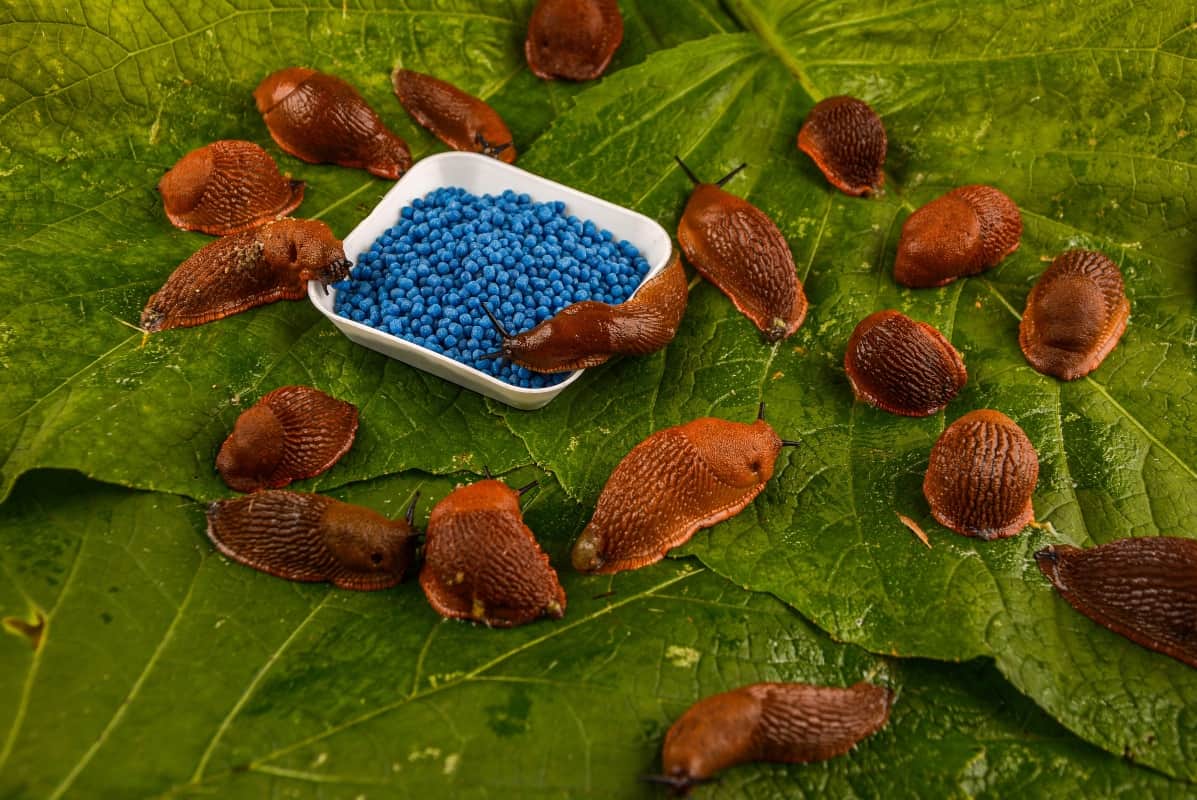Bleeding heart plants are good additions to your garden with their flowers that are pink in color and look like hearts. The plant is surprisingly simple to grow, however, it is vulnerable to a variety of bothersome insects. That's why we researched what bugs prey on bleeding heart plants and how to prevent them from doing so.
Aphids, slugs, scales, and snails are the most common pests you can find preying on bleeding heart plants. You can apply a commercial or homemade insecticidal soap spray to prevent most posts or try neem oil.
For slugs and snails, you might try commercial or homemade baiting methods or manually remove and relocate them.
Refrain from applying insecticides if beneficial insects are present, as they can naturally assist you in removing and deter unwanted pests.
Keep reading as we elaborate on how these pests destroy your bleeding heart plants. We'll also discuss how to control and prevent them from destroying your plant. In addition, we'll also delve into what diseases your plant might encounter and how to control them.
How Do Insects Prey On Bleeding Heart Plants?
![Aphid Colony Close-up. Greenfly or Green Aphid Garden Parasite Insect Pests, What Is Eating My Bleeding Heart Plant [And How To Prevent It]](https://gardentabs.com/wp-content/uploads/2022/08/Aphid-Colony-Close-up.-Greenfly-or-Green-Aphid-Garden-Parasite-Insect-Pests-What-Is-Eating-My-Bleeding-Heart-Plant-And-How-To-Prevent-It.jpg)
One of the most irritating pests that diminish bleeding hearts is the aphid. Aphids, tiny green or black insects sometimes known as plant lice, harm plants by sucking out the tasty sap. They are typically found in large groups on leaf undersides or stems. A light infestation won't harm a plant much, but a heavy one can weaken and destroy it.
On the other hand, scales may appear as waxy, tan, or light brown lumps on plant stems and leaves. Scales damage plants similarly to aphids by sucking out the delicious fluids.
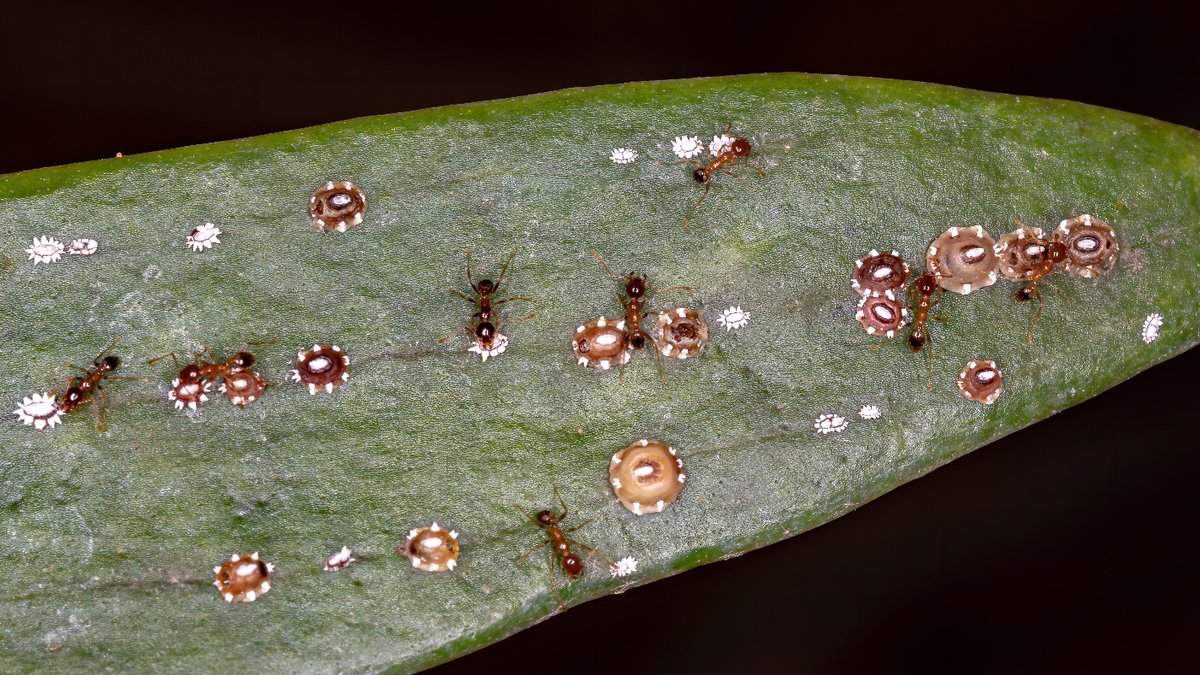
Meanwhile, slugs and snails eat ragged holes through leaves, leaving behind a slimy, silvery trail. They are most active at night.
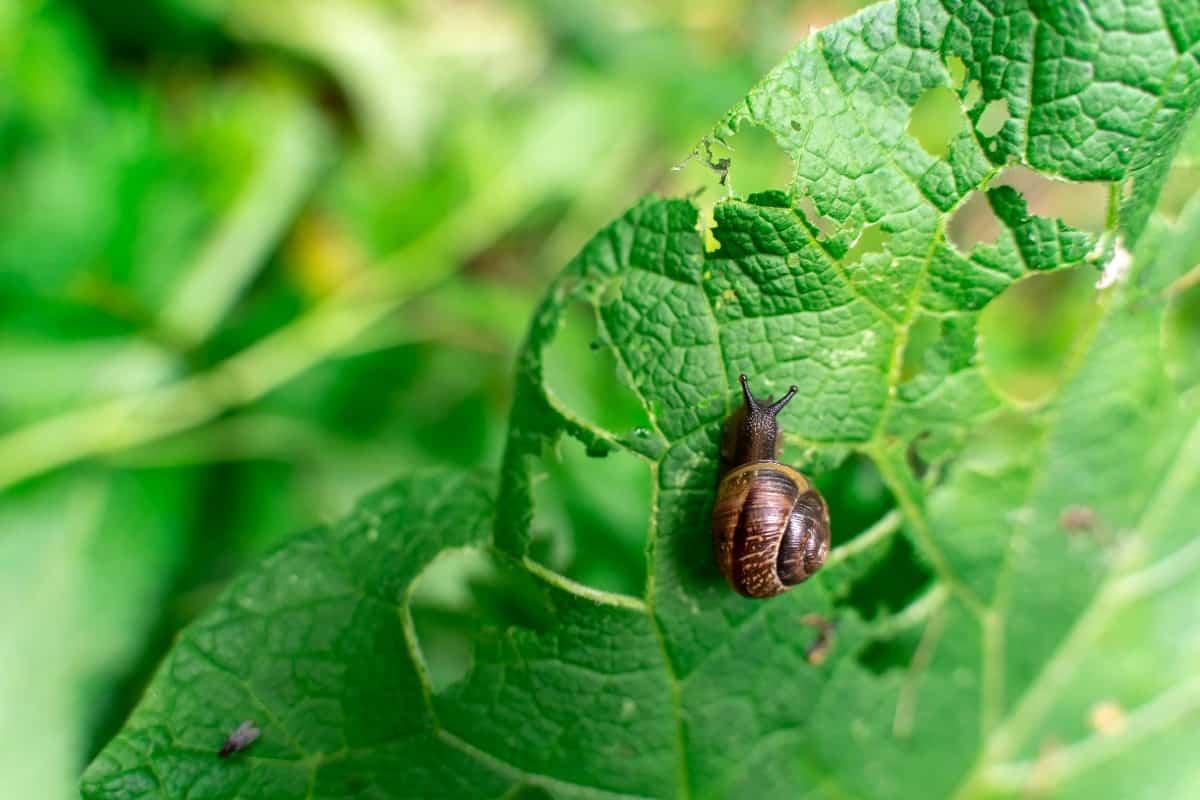
How To Control Pests From Further Damaging Your Bleeding Heart Plant?
Using commercial or homemade insecticidal soap spray, aphids and scale are typically simple to manage. Remember to never mist the foliage when it's hot outside or when the sun is directly overhead.
Click here for this product on Amazon.
Neem oil or horticultural oil can also be used to combat these tiny sucking bugs since they effectively suffocate them. In either case, if you see bees or other beneficial insects on the plant, wait until later in the day to spray pests.
Click here for this product on Amazon.
Avoid using chemical insecticides because they kill helpful insects that help control pests with bleeding hearts. Ineffective toxic insecticides frequently give hazardous bugs the upper hand.
Detering Slugs
Slug and snail removal is a tedious task, but one option is to go on nighttime or early morning hunt with a flashlight. Place the pests in a pail of soapy water while wearing gloves.
Slug bait is another method of slug treatment. Garden businesses carry both deadly and non-poisonous varieties. Some gardeners had success using improvised traps, such as a small amount of beer in the lid of a jar.
Some people make use of diatomaceous earth, a natural product that kills pests by scraping off their sticky undersides. Slugs love to hide in leaves and other detritus, so keep the area around the plant free of them. Trim mulch to no more than three inches.
Why Is Your Bleeding Heart Plant Leaves Turning Yellow?

If you observed that the leaves of your plant are becoming yellow, this can be caused by the following:
- Extremely Hot Temperature
- Underwatering
- Overwatering
- Stem Rot, Fusarium, and Verticillium Wilt
- Soil and Lighting
Extremely Hot Weather
The leaves of the bleeding heart plant shrink during the summer, but if it is hotter than usual, the leaves turn yellow much earlier.
To deal with this, make sure the soil around the plant doesn't dry up during the summer. In the fall, you might wish to trim the plant down to 1 to 2 inches above the ground.
Underwatering
The leaves of underwatered plants appear limp but are easily broken. To determine whether you overwatered or underwatered a plant, keep track of your watering sessions.
As determined by a finger test, the plant lacks water with the soil completely dry. You might wish to give these plants regular watering.
Overwatering
When watering your bleeding heart plant, use caution. The leaves become yellow if you give a plant more water than it requires. Overwatering prevents the roots from absorbing the necessary nutrients, which results in the yellowing of the foliage.
Stem Rot, Fusarium, and Verticillium Wilt
Only two of the several diseases that commonly affect bleeding heart plants are fusarium wilt and stem rot. While stem rot will result in a yellowish, slimy film over every part of the plant with wilted, discolored foliage, fusarium wilt initially turns the lower leaves yellow. Both times, the plants ought to be taken out and thrown away.
While verticillium wilt also results in yellowed foliage, it first appears as wilted leaves. Get rid of the plant, including all of its roots.
Although plants in well-drained soil are less susceptible to these illnesses, you should be careful where you buy your plants. Contaminated soil and plant materials can support the growth of these diseases.
Soil And Lighting
Lighting may also be a factor in a bleeding heart plant's yellow leaves.
In some regions, plants in full sun will die back in the spring as a result of too much heat and light, even though this is a natural reaction to the arrival of warm temperatures for the plant. See whether shifting the plant to a location with dappled lighting in the fall or early spring will be helpful.
Another possible reason for yellowing leaves is the pH of the soil. Acidic soil is what bleeding heart plants prefer. Sulfur or peat moss can help plants flourish in alkaline environments. Six months before planting, it is advisable to improve the soil.
Click here for this product on Amazon
What Season to Plant Bleeding Heart Seeds?
Can You Grow Bleeding Heart Plants From Seeds?
Yes, you can! To do this, you can follow these steps:
- Place the seeds in a soil-filled pot to start them indoors.
- For six to eight weeks, place the pot in a plastic bag and store it in the fridge.
- Remove the pot, then gradually reintroduce light and warmth to the plant. The seeds' ability to sprout and germinate depends on the temperature change and sunlight exposure. Even though they are not invasive, bleeding hearts frequently self-seed in gardens.
- You can carefully dig up and replant the little seedlings.
Click here for this product on Amazon.
Here are some tips to help you make sure that you can successfully grow your bleeding heart plants:
- Make sure you locate a space with well-draining soil in a somewhat shaded area before planting bleeding heart seeds there. In muddy soil, this plant does not thrive.
- Before the first frost, sow the seeds approximately 0.5 inches deep in the soil and moisten the area. You will then simply need to wait for your seeds to grow and sprout.
- Be cautious that your plant may not have any blossoms in the first few years.
The Best Environment For Growing A Bleeding Heart Plant
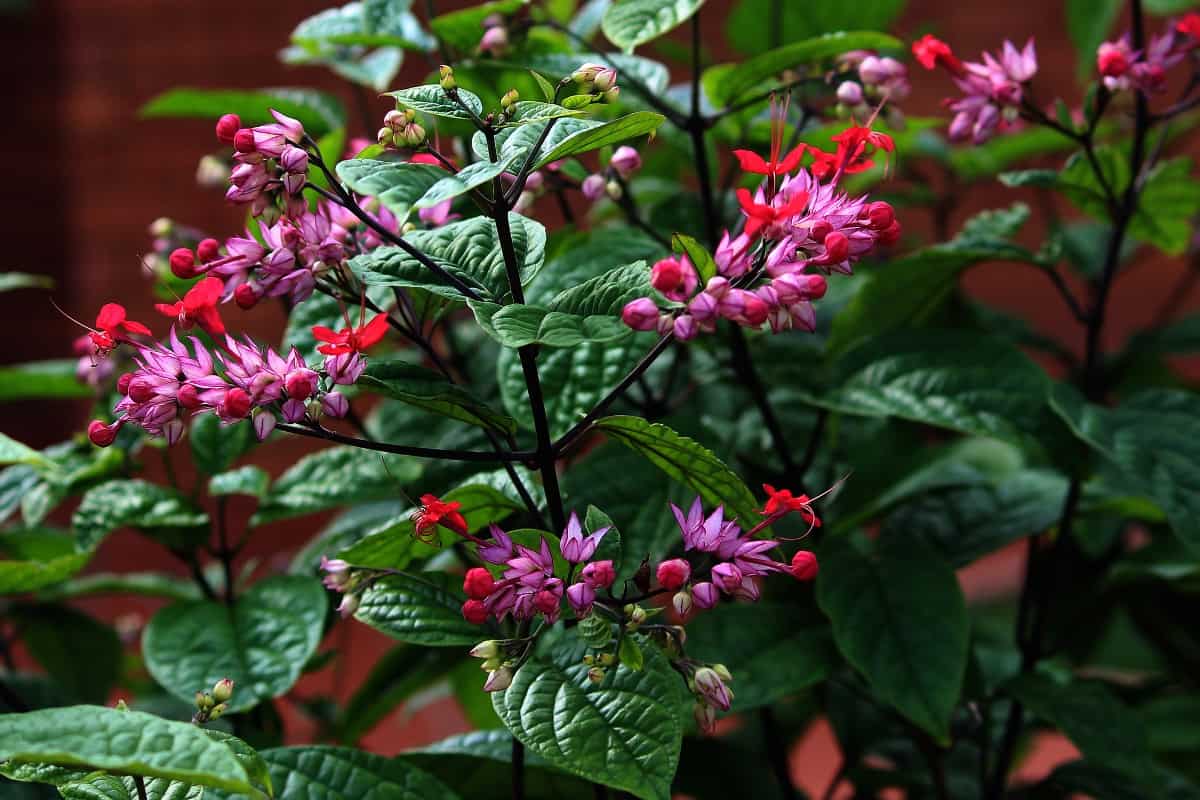
Let's look at the best conditions to develop a bleeding heart plant:
Use Indoor
It is the perfect indoor plant because it can survive in complete shade with little or no sunshine.
This plant's life is perennial rather than evergreen. After its blooming season, which is in the late spring, it dies back to the ground in the late summer.
As summer heat builds, bleeding heart plants start to turn yellow. This natural yellowing is an indication that the plant is preparing to store energy for the coming winter. It can tolerate excessive humidity well and prefers a temperature range of 55 to 75 ºF.
Grow On Well-Drained And Fertile Soil
On fertile, well-drained soil, it is seen to thrive nicely. It thrives in regions with direct sunlight in chilly climates. However, the condition of your soil will determine how often to fertilize bleeding heart plants because they are not heavy feeders.
Water plants frequently during the summer, especially when it's hotter outside. Whether from rainfall or human watering, they need approximately an inch of water each week.
This flora thrives in both partial and total shade in warm climates. Therefore, this flower is ideal for both an indoor garden and an outdoor garden.
Plant In Organic Soil
To correctly care for a bleeding heart, make sure that it is planted in organic soil, that the soil is prepared with compost before planting, and that it is properly kept wet by routine watering.
Bleeding heart prefers somewhat acidic soil but will thrive in neutral soils as well. It prefers moist, humus-rich soil with lots of organic matter.
In Closing
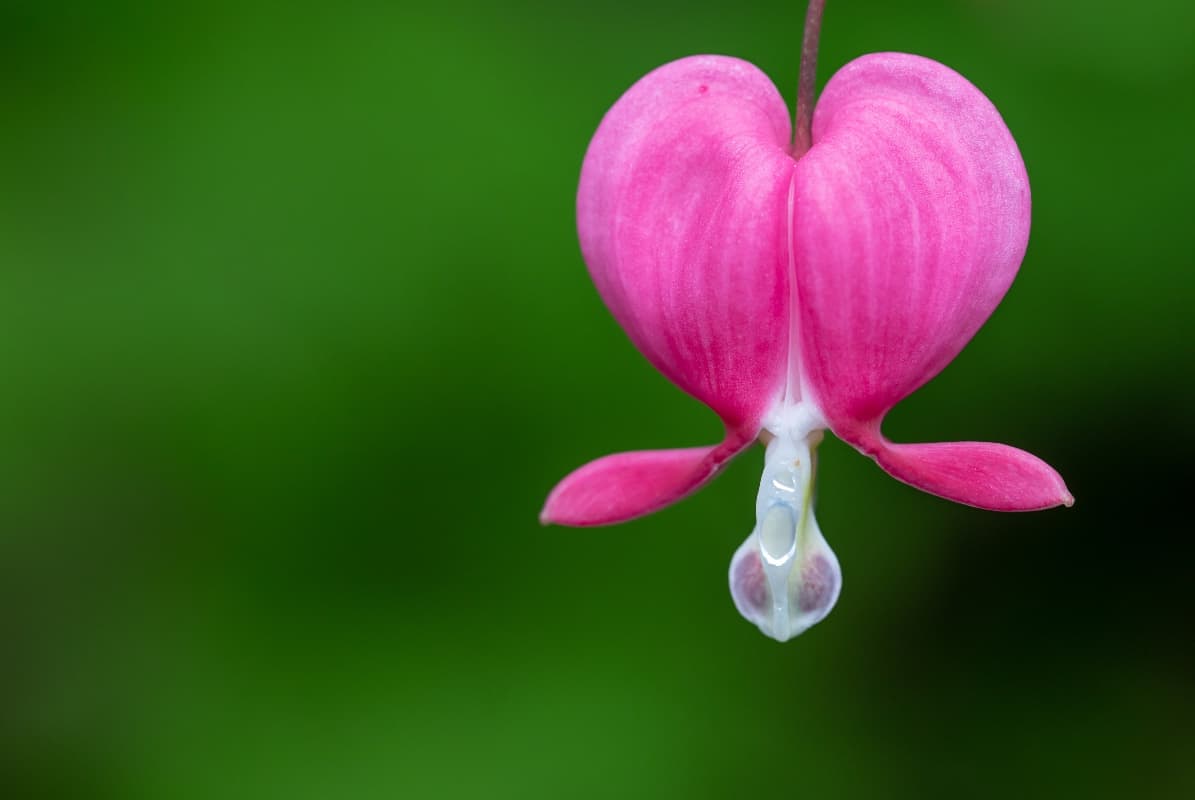
Pests such as aphids, scales, slugs, and snails are mostly the ones responsible for the damage you can see on your bleeding heart plants. Although, you can easily prevent them by using insecticidal soap spray, neem oil, or just manually removing them from your plant.
You can check out these other posts if you enjoyed this one:



